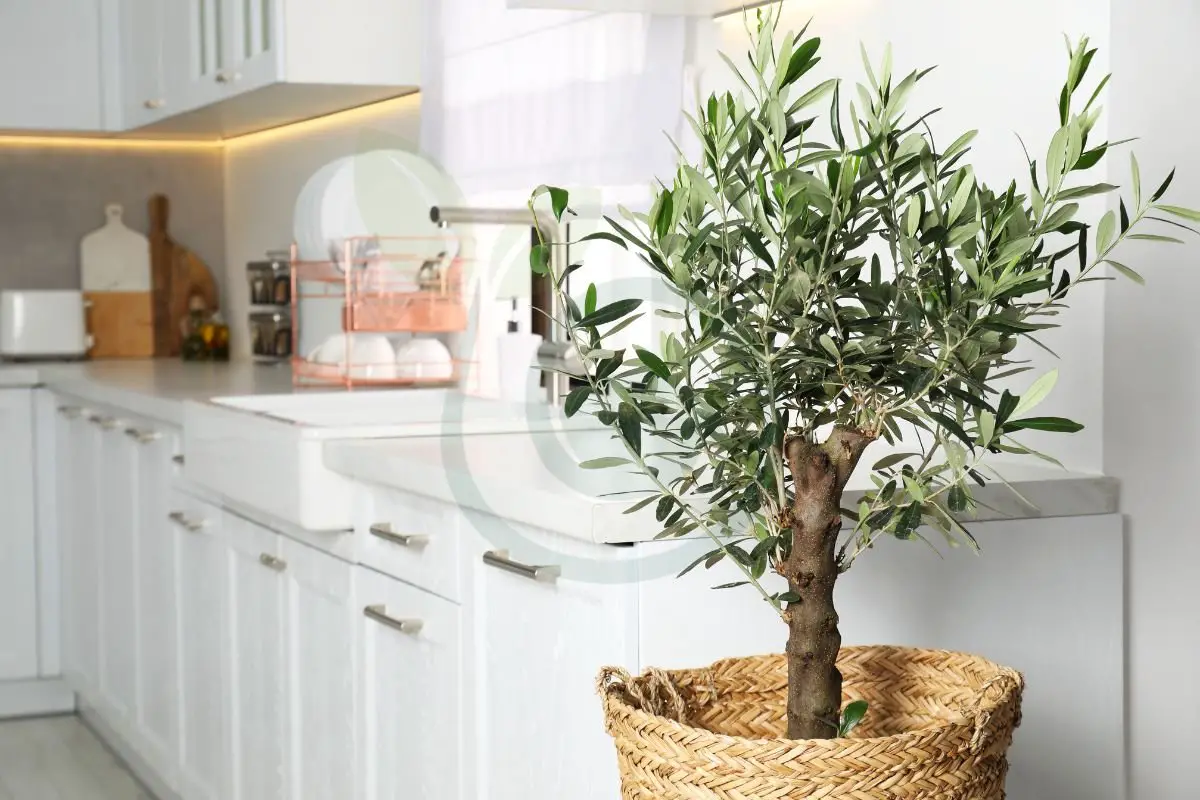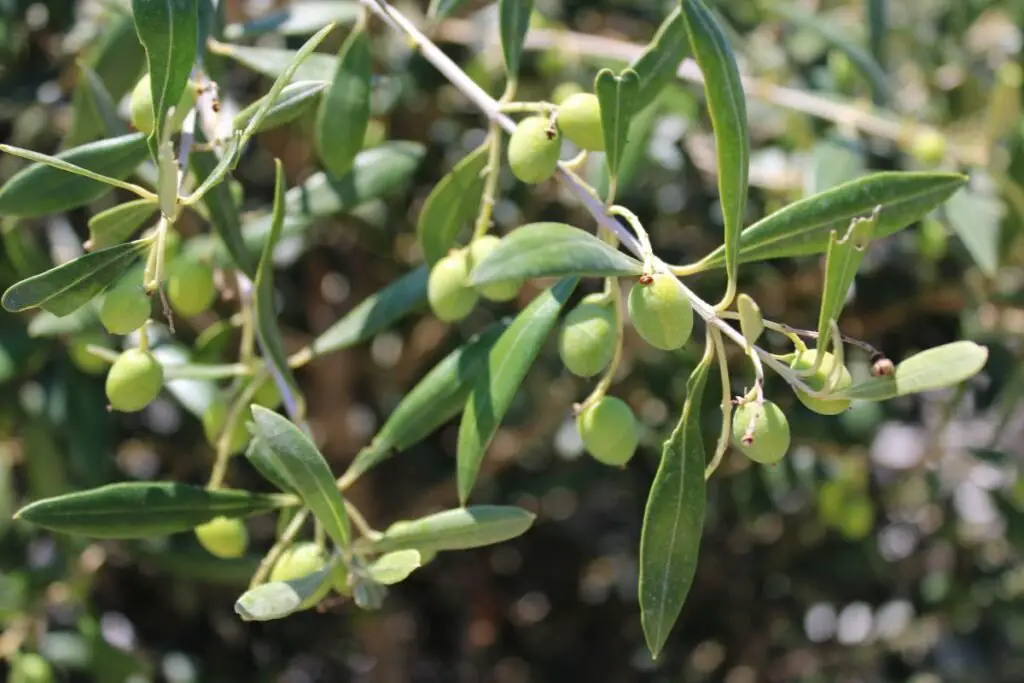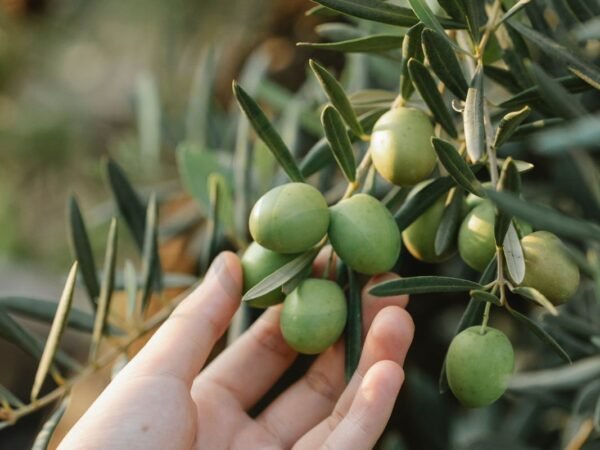
Curious about growing an olive tree in a pot? You're not alone. This ancient practice dates back centuries, with people cultivating olives for their fruit and oil. But can you successfully nurture these trees in a container? Let's delve into the historical context of potted olive trees and explore the feasibility of this endeavor today. Stay tuned to uncover tips on how to care for your potted olive tree like a pro.
Key Takeaways
- Start Small: Begin with a young olive tree in a suitable-sized pot to facilitate growth and adaptability.
- Provide Proper Drainage: Ensure your pot has adequate drainage holes to prevent waterlogging, promoting healthy root development.
- Regular Pruning: Trim your olive tree to encourage new growth, maintain shape, and improve fruit production.
- Optimal Sunlight: Place your potted olive tree in a sunny spot to promote photosynthesis and overall health.
- Fertilize Wisely: Use a balanced fertilizer sparingly to avoid overfeeding and potentially harming the tree.
- Monitor for Pests: Keep an eye out for common pests like scale or aphids and take prompt action to protect your olive tree.
Understanding Olive Trees
Planting Basics
When considering growing an olive tree in a pot, the first step is choosing a healthy sapling. Opt for one with strong branches and vibrant green leaves. Ensure your pot has drainage holes to prevent waterlogging, which can harm the roots. Use a well-draining potting mix suitable for olive trees to provide adequate moisture without water accumulation.
For successful growth, select a pot that is at least 20 inches deep and wide. This size allows optimal root development, ensuring stability and support for the tree as it grows. Terracotta or ceramic pots are excellent choices due to their insulation properties and stability, promoting healthy root systems. Remember to check that the chosen pot has sufficient drainage holes to prevent excess water retention that could lead to root rot.
Pot Selection
Olive trees thrive in well-draining soil with a pH level between 6 and 8. Amend the soil with organic matter like compost before planting; this boosts fertility levels essential for robust growth. Avoid heavy clay soils as they tend to retain too much moisture, potentially causing root damage due to overwatering.
When nurturing an olive tree in a container, proper care must be taken concerning its environment—choosing the right-sized pot ensures ample space for root expansion while maintaining stability during growth phases. The material of the container plays a vital role: terracotta or ceramic pots provide insulation benefits critical for protecting roots from extreme temperatures.
Planting Your Olive Tree

Potting Techniques
When planting an olive tree in a pot, it's crucial to ensure proper drainage. Start by adding a layer of gravel or broken pottery at the bottom of the pot. This helps prevent waterlogging and root rot. Next, fill the container with a well-draining soil mixture, ensuring there is enough space left for the root ball to settle comfortably.
After preparing the pot, gently position your olive tree sapling in the center. Carefully backfill around the roots with soil, making sure not to compact it too tightly. This allows for adequate airflow and water penetration essential for healthy growth.
- Add gravel or broken pottery for drainage
- Fill with well-draining soil mix
- Position sapling carefully in center
Repotting Essentials
To keep your potted olive tree thriving, regular repotting is necessary every 2-3 years. This prevents root-bound conditions where roots outgrow their container and become cramped. When repotting, opt for a slightly larger pot than before to accommodate continued root development.
During repotting, inspect the roots and prune any damaged or overcrowded ones before transferring them to their new home. Trimming these roots encourages healthier growth and reduces stress on the plant during transplantation.
Essential Care Tips
Watering Needs
To ensure your potted olive tree thrives, remember to water it deeply but infrequently. Let the topsoil dry out between watering sessions. Adjust how often you water based on weather conditions and humidity levels. Overwatering can cause root rot and other diseases.
Remember, water is crucial for plant growth, but moderation is key. By allowing the soil to dry slightly between watering sessions, you prevent issues like root rot that stem from excessive moisture accumulation.
When considering how much to water your olive tree, think about the weather and humidity levels in your area. Hotter climates may require more frequent watering compared to cooler regions where evaporation rates are lower. Always monitor the soil's moisture content before reaching for the watering can.
Feeding Guidelines
Feeding your potted olive tree with a balanced slow-release fertilizer during its growing season is essential for healthy growth. Follow package instructions carefully regarding application rates and timing of fertilization sessions.
Properly nourishing your potted olive tree ensures it receives all the necessary nutrients for robust growth and fruit production. Consider supplementing with liquid fertilizers high in nitrogen if you notice signs of nutrient deficiencies or slow growth in your plant.
Maximizing Growth
Pruning Strategies
Pruning your olive tree is crucial for its growth. It's best to prune in late winter or early spring before new growth starts. This practice helps the tree focus its energy on developing healthy branches and leaves. When pruning, remember to remove any dead, diseased, or crossing branches. By doing so, you improve airflow within the canopy and allow more sunlight to reach all parts of the tree, aiding in photosynthesis.
Maintaining an open canopy shape is essential for olive trees grown in pots as it promotes better fruit production. A well-pruned olive tree not only looks tidy but also ensures that each branch receives adequate sunlight for optimal growth and fruiting potential.
Sunlight Exposure
Sunlight is vital for the health and productivity of your potted olive tree. Position the pot in a sunny location where it can bask in 6-8 hours of direct sunlight daily. If possible, rotate the pot occasionally to ensure all sides of the tree receive equal exposure to sunlight throughout its growth cycle. However, be cautious during hot summer months; shield your olive tree from intense midday sun by moving it to a spot with partial shade.
Adequate exposure to sunlight ensures that your olive tree can carry out photosynthesis effectively, converting light into energy essential for growth and fruit development.
Boosting Fruit Production
Pollination Factors
Olive trees can grow in pots, but to enhance fruit production, consider pollination factors. While olive trees are self-fertile, cross-pollination can improve fruit set significantly. Introducing another variety nearby can boost pollination rates and increase the yield of olives.
To further encourage pollinators like bees and butterflies, plant nectar-rich flowers around the olive tree. These pollinators play a crucial role in transferring pollen between flowers, aiding in successful fertilization and ultimately leading to more abundant fruit production.
Optimizing Conditions
Maintaining specific conditions is essential for optimal growth and fruit production of olive trees grown in pots. Aim to keep a consistent temperature range between 50°F and 85°F as fluctuations outside this range may impact the tree's health and productivity negatively.
Proper air circulation around the pot is vital to prevent fungal diseases that could harm the olive tree. Shielding the tree from strong winds is crucial as they can damage delicate branches or disrupt overall growth patterns.
Protecting Your Tree
Cold Weather Care
To shield your potted olive tree from frost, relocate it indoors or provide insulation in winter. During cold months, water the tree sparingly to prevent root rot while it's dormant. In early spring, trim any branches damaged by frost to promote new growth.
When temperatures drop, safeguard your potted olive tree by moving it inside or insulating it. Remember to limit watering during winter to avoid root issues and prune frost-damaged branches come springtime for a healthy tree.
Pests and Diseases
Keep an eye out for common pests such as the olive fruit fly, scale insects, and aphids that can harm your olive tree. If infestations occur, use organic insecticides or horticultural oils when necessary to combat them effectively. To ward off diseases like root rot and fungal infections, maintain proper watering practices consistently.
Be vigilant against pests like the olive fruit fly and scale insects that can damage your potted olive tree. Use organic solutions like insecticides or horticultural oils if needed and ensure you follow correct watering techniques to prevent diseases.
Harvesting Olives
Best Practices
Growing an olive tree in a pot requires specific care to ensure optimal growth and fruit production. Monitor the moisture levels of the potting mix regularly using a moisture meter or by conducting a simple finger test. This helps prevent overwatering or underwatering, both of which can harm your olive tree. To retain moisture and inhibit weed growth, consider mulching the soil surface with organic materials like wood chips.
Regularly inspect your potted olive tree for any signs of stress, pests, or diseases. Early detection is crucial in addressing issues promptly and preventing them from spreading. By staying vigilant and proactive, you can maintain the health and vigor of your olive tree throughout its growth cycle.
- Monitor moisture levels regularly
- Mulch soil with organic materials
- Inspect for stress, pests, and diseases diligently
Timing and Techniques
Pruning plays a vital role in promoting healthy growth and maximizing fruit yield in potted olive trees. During the plant's dormant period, typically in late winter to early spring, it is ideal to prune your olive tree. This practice helps reduce stress on the plant while encouraging new growth for future harvests.
When pruning your potted olives, always use clean and sharp tools to make precise cuts that minimize damage to the tree. This not only ensures proper healing but also reduces the risk of infections that could compromise the overall health of your olive tree. Be sure to remove any suckers or water sprouts that may emerge from the base of the tree as they divert energy away from fruit production.
- Prune during dormant period
- Use clean & sharp tools for precise cuts
Propagation Methods
Cuttings Technique
Taking semi-hardwood cuttings from healthy olive trees in late summer or early fall is a common way to propagate olive trees. These cuttings should be dipped in rooting hormone before being planted in a well-draining potting mix. To ensure successful root development, it's essential to provide bottom heat and maintain high humidity levels around the cutting.
Propagation through cuttings technique offers several advantages, such as faster growth compared to seed growing. By selecting cuttings from healthy parent trees, you are more likely to yield robust and disease-resistant offspring plants.
- Advantages:
- Faster growth rate
- Disease resistance of parent plant transmitted
On the other hand, one downside of using this method is that it requires specific care and conditions for successful root development.
- Disadvantages:
- Requires careful monitoring of heat and humidity levels
Seed Growing
Another method for propagating olive trees involves collecting ripe olive seeds and soaking them in water for about 24 hours before planting. Once soaked, these seeds can be sown individually into pots filled with a well-draining soil mix. Germination might take several weeks; therefore, patience is key during this process.
- Steps:
- Soak ripe olive seeds in water for 24 hours.
- Plant the soaked seeds into individual pots with well-draining soil.
Growing olives from seeds presents an opportunity to observe the entire lifecycle of an olive tree right from germination onwards. It allows you to witness each stage firsthand and better understand the growth process.
- Observing seed germination provides insight into plant development stages.
While seed propagation offers a rewarding experience by witnessing the complete life cycle of an olive tree, it can also be time-consuming due to prolonged germination periods compared to other methods like using cuttings.
Landscaping Ideas
Container Arrangements
You can create stunning displays by mixing different varieties in a large pot. For a charming Mediterranean feel, pair your olive trees with plants like lavender, rosemary, or succulents. Using decorative pots or planters can elevate the overall look of your arrangement.
To enhance the visual appeal of your garden, vary the height and size of potted olive trees. Try incorporating pots of different colors and textures to bring depth and contrast to your outdoor space. Experimenting with various arrangements and groupings will help you discover the most visually appealing design for your container garden.
- Mix different olive tree varieties
- Pair with lavender, rosemary, or succulents
- Use decorative pots for aesthetic enhancement
Design Tips
For an eye-catching landscape design using potted olive trees, play around with heights and sizes to create visual interest. Incorporate pots in various colors and textures to add dimension to your outdoor area. By experimenting with different arrangements and groupings of potted plants, you can find the perfect design that suits your taste.
You've now got the lowdown on growing olive trees in pots. From understanding the basics to maximizing growth and harvesting your own olives, you're all set to embark on this leafy journey. Remember, a little love and care go a long way in nurturing your olive tree to its full potential. So, roll up your sleeves, grab that watering can, and watch your tree flourish!
Now it's time to get your hands dirty and start planting. Don't hesitate to experiment with different care techniques and propagation methods. Your green thumb will guide you through the process, leading to a bountiful harvest of olives straight from your own backyard. Happy planting!
Frequently Asked Questions
Can olive trees survive in pots?
Yes, olive trees can thrive in pots if provided with proper care and maintenance. Ensure the pot has good drainage, use well-draining soil, provide adequate sunlight, and monitor watering to prevent root rot.
How often should I water my potted olive tree?
Water your potted olive tree deeply but infrequently. Allow the top 2-3 inches of soil to dry out between watering sessions to prevent overwatering. Adjust the frequency based on environmental conditions like temperature and humidity.
When is the best time to harvest olives from my tree?
The ideal time to harvest olives is typically in late autumn or early winter when they have reached their optimal size and color. Perform a taste test by sampling an olive; ripe fruits should have a rich flavor without bitterness.
What are effective ways to protect my olive tree from pests?
To protect your olive tree from pests, consider using organic pest control methods like neem oil or insecticidal soap. Regularly inspect your tree for signs of pests such as scale insects or aphids and take prompt action when necessary.
Is it possible to grow an olive tree indoors?
While challenging due to their need for ample sunlight, you can grow dwarf varieties of olive trees indoors near a sunny window or under grow lights. Monitor humidity levels, ensure good air circulation, and consider seasonal outdoor exposure for best results.
Image Source: Paid image from CANVA



